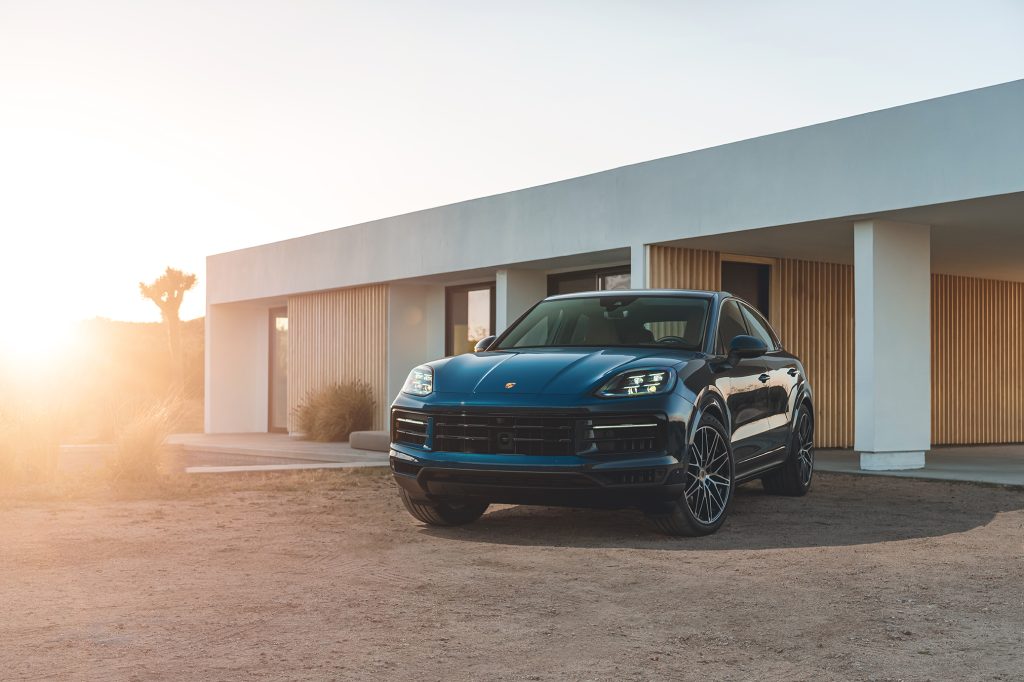Test Drive: 2024 Porsche Cayenne
This latest model goes further than previous generations to make sure every need is met

If you’re a fan of the many very special sports cars Porsche has offered over the last two decades—the GT2 RS, Boxster Spyder, 911 Dakar and 918, to name a few—then you should give thanks to the Porsche Cayenne. Comprising about 30% of worldwide sales for Porsche, the Cayenne has allowed the automaker to produce ever more exciting sports cars since the SUV arrived in 2003. While it wasn’t the first SUV from a German automaker (Mercedes debuted the ML320 in 1998) it was the first SUV from a company dedicated to building sports cars. In the 20 years since the Cayenne arrived on the scene, Porsche’s approach to adding a high volume model to a niche lineup has been copied again and again.

As automakers have been chasing the 911 for decades and trying to top it as “the sports car,” they’ve also found themselves chasing the Cayenne and trying to best it as “the sporty SUV.” Some have succeeded in outpacing the Cayenne in specific categories, such as amenities and utility. However, none have ever bested it overall. That’s because although it’s nearly 5,000 lbs, it’s still very much a Porsche. That has meant—from the start–that the Cayenne has been more exciting to drive than other SUVs; now, the 2024 model goes further than previous generations to make sure every need is met.

Although it’s still technically part of the third-generation, because of chassis and crash structure carryover, the 2024 Cayenne looks and feels more like a brand new vehicle than a refreshed one. The exterior hasn’t been radically reworked, that’s not Porsche’s way of doing things, but the changes are apparent and beneficial. The front fascia appears more chiseled with larger air intakes, restyled headlights, more aggressive fenders and a subtle yet perceptible hood bulge. The rear had less work done, but the changes remain meaningful with thin 3D-effect LED tail lights running edge to edge and a tailgate that emphasizes the width of the Cayenne. Not for nothing, the license plate cutout has been moved off the tailgate to the bumper on the regular Cayenne to align it with the Cayenne Coupe. It’s a small physical change, but one that carries a big visual impact and tidies up the rear end.

While the changes to the exterior may require a second look to spot, the changes inside are apparent from the moment you open the door. A new 12.6-inch curved digital dash replaces the traditional five gauge cluster and sits alongside the PCM 6.0 infotainment system and its 12.3-inch center mounted touchscreen. By removing the entire binnacle and replacing it with a subtle curved screen Porsche has created a driver-oriented cockpit that’s surprisingly free from distraction given the real estate occupied by screens. One of the five layouts available on the digital dash is a minimal look that only displays speed at the center and removes all other non-essential information. It’s a welcome tip of the hat to drivers that just want to enjoy the drive, even in an SUV.

Continuing across the cabin, you’ll find that gear selection is now handled by a small toggle mounted between the steering wheel and infotainment screen. We quickly became accustomed to using it during our time behind the wheel of various 2024 Cayenne models and have since found ourselves wishing for it in other vehicles. With the gear selector removed from the center console there’s more space for storage, a new climate-control panel that’s an exercise in how to do haptic feedback right, as well as a wireless charging pad that makes for a good place to keep your mobile whether the battery is low or not.

Crucially, the grab handles that have been a staple since the first-generation Cayenne remain jutting out from the center console at roughly 45 degrees. Often imitated, never duplicated, these handles are mirrored on the inside of the driver and passenger doors and remain a signature element of the Cayenne’s cabin. Rounding out the cockpit is the same 10.9-inch touchscreen for the front passenger that’s found in the Taycan, which allows that traveler to enjoy their own streaming entertainment and control certain vehicle features. The display’s polarized filter makes it appear to the driver as a black plastic dash element, so there’s no distraction to consider—however we can’t help but think one of the many premium finish materials offered as trim would be better applied to this space than another screen.

The visual updates to the Cayenne inside and out are all well and good, but without the consistent refinement of an already great chassis and powertrain, they’d be done in vain. Of course consistent refinement is what Porsche does best, so the return of a V8 engine to the Cayenne S, the addition of Porsche Active Suspension Management as standard equipment, and the upgrade of the battery in the Cayenne S E-Hybrid from 17.9 kW to 25.9 kW come not as a surprises, but reliable progressions. Each of these ticks a box for different consumers and makes the new Cayenne more compelling than the last one.

We’ve come to count on Porsche for making smart choices such as these and as a result we’re always looking forward to what they’ll do next. Currently the Cayenne family has been simplified, bringing the lineup down to just four models with Cayenne, Cayenne S and Cayenne S E-Hybrid available in traditional or coupe form, and the Cayenne Turbo GT remaining coupe only. That being said, we can’t imagine that the enthusiast-oriented GTS, rowdy Turbo and best-of-both-worlds Turbo S E-Hybrid won’t appear sometime in the near future. If for some reason they didn’t, we’d still say that the Cayenne lineup is stronger than ever and there’s a configuration available to suit the needs of anyone shopping in the luxury sport SUV segment.
Images courtesy of Porsche












